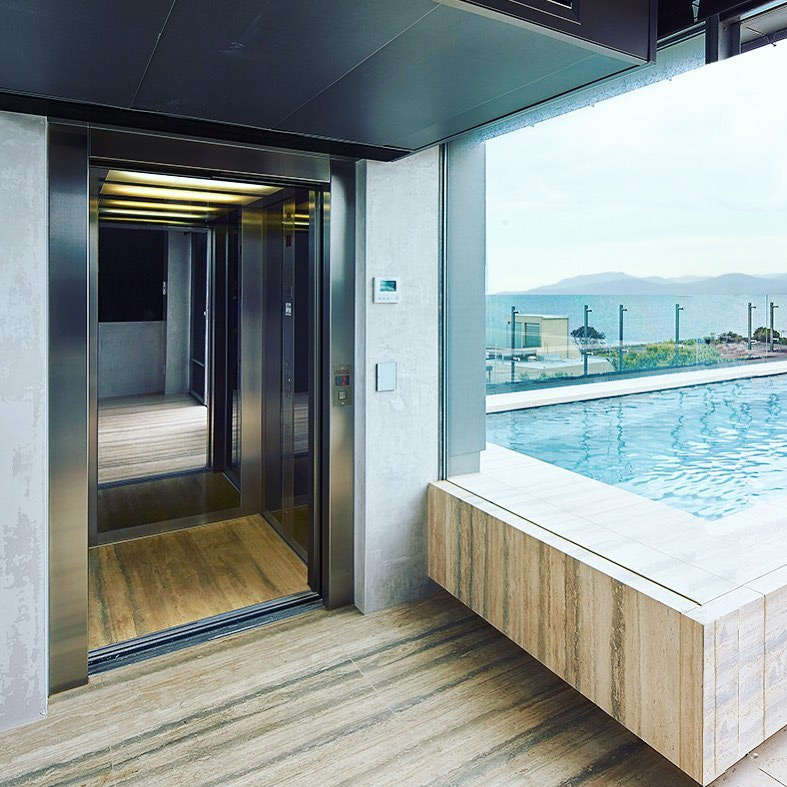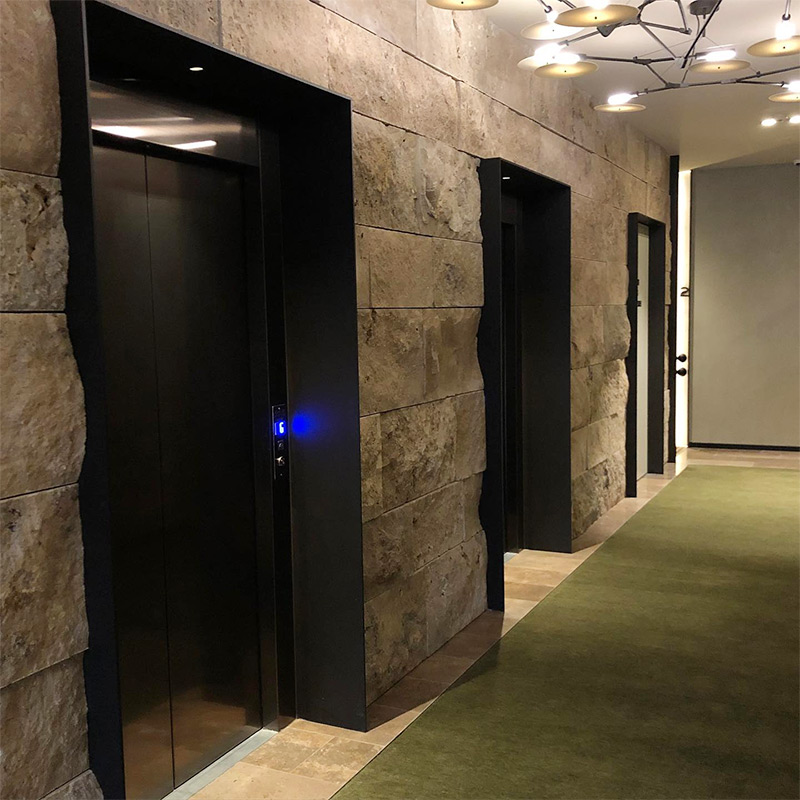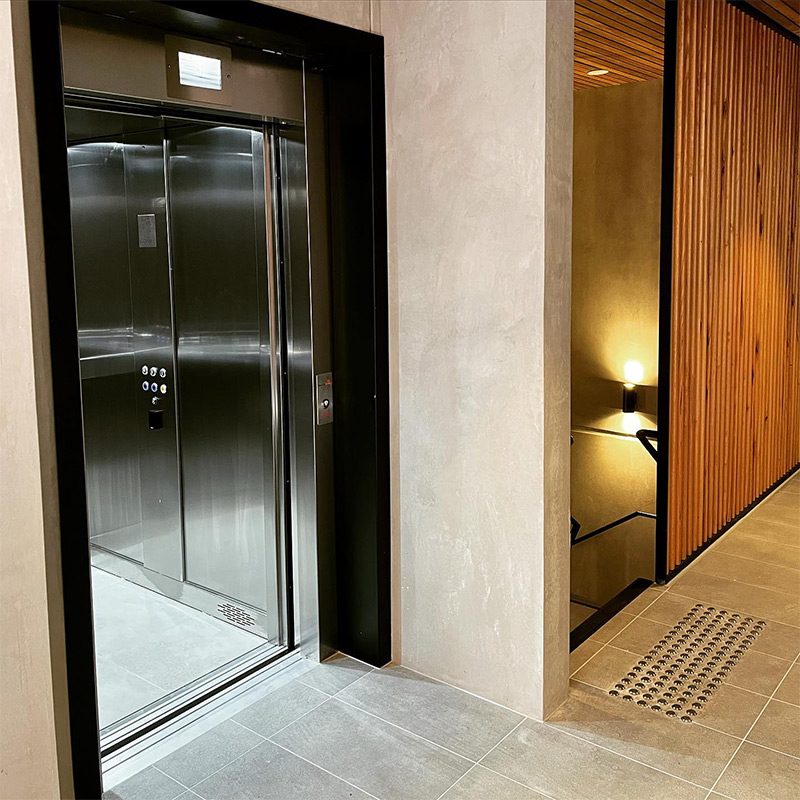Hi Everyone,
Andrew Lewis here! As an owner of lift companies and the manager of sales for 20 years, I thought I might offer some advice on how to select a lift, as there are many options. I have seen some significant mistakes made over the years! On a few occasions, I have seen lifts removed from new buildings and then shafts re-built to accommodate the correct lift.
My first bit of advice is: Do not go to a lift company website to get your lift shaft dimensions!
Specifiers will often try to find a lift company that has a product that will fit the space they have without first considering building code and the end user requirements. Remember, form should follow function! Web sites often do not specify if a lift is for domestic or commercial application and for what building classification. I have lost count of how many calls I have had from stressed builders and owners who can’t fit their desired lift into their designed shaft because a designer has cut 200mm off the shaft to get a bit more space for wardrobe or bathroom. This stress can easily be avoided by the following:
Determine if your lift is a home lift or commercial lift
All lifts for buildings that are not for a single residence with no common or shared space are deemed to be commercial according to lift code. For example, a lift servicing two private homes with a shared basement or lobby will therefore be deemed commercial.
Home Lifts:
• If you are looking for a home-lift there are a range of smaller companies in Melbourne that can help you. It is a good idea to select one with their head office in Melbourne as you will generally get better support during the installation process and after sales.
• Be very sure on how fast you want your lift to go before you specify shaft dimensions. Faster lifts generally require deeper pits and more headroom.
• Shaft dimensions vary significantly between swing doors and quality sliding doors.
• If you can select the lift before you commence your design that would be the best scenario. If you can’t make your mind up on your preferred provider then get a range of dimensions from several companies that have suitable lifts. You will need their drawings showing, Pit, shaft Width and Depth and Headroom. Select the largest dimensions from each and use those to design the shaft so you are then not limited for choice of companies down the track.
• If you select an hydraulic lift don’t forget the space for the hydraulic equipment.
• Ensure you have enough power to run your selected lift, fast hydraulic lift will require a significant number of amps.
• Cheaper light weight lifts generally have smaller shafts when compared to higher quality more robust products.
• Deciding on swing doors or sliding doors? Swing doors need smaller shafts are cheaper and slower and generally less robust than sliding doors.
• A good quality sliding door lift is generally commercial grade so should considerably out last a swing door lift.
Commercial Lifts:
• If you want to be sure you are getting the correct lift to meet your specific requirements and regulations I would recommend contacting a couple of lift consultants. Just Google “lift consultants Melbourne” and you will be fine.
• Lift consultant fees vary significantly so check their fees before you engage one. However, the cost of the consultant is small compared specifying the wrong lift or building to the wrong dimensions.
• Commercial lifts are often used in homes by those who want quality and speed and quality of ride.
• Accept that a commercial lift in a new building needs a pit of around 1000mm in depth to comply with lift code. This is for the safety of the lift mechanic when they are working on your lift, they have somewhere to hide if the lift lowers unexpectedly!
• Accept that Headroom is more than that required for a home lift, again, primarily for lift mechanic safety.
• Accept that the width and depth of the shaft will be larger than most home lifts to allow for sliding doors, installation tolerances and the more robust construction of commercial lifts.
• Ensure that all the disabled access features have been decided upon prior to design such as 2 x control panels in the lift cabin, thickness of any local finishes in the cabin so minimum dimensions for disabled access are met, the locations of the landing control panels and wall lanterns, handrail locations.
• Ensure you have allowed space for hydraulic cabinets or machine access panels for all electric lifts.
• Does your building have the power to run your selected lift when air conditioning etc is operating?
The above is only a basic guide but is based on the most common mistakes that designers, builders, and customers have made over the years. The next most common question is “How much should I pay for a lift?” This is the topic for my next blog, catch you then.
Andrew Lewis
Director
Melbourne Elevators
Published: July 12, 2024


